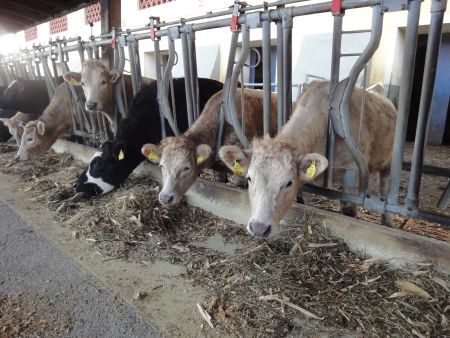In Europe and also in Austria, the Wagyu breed has only become better known in the last 10 years. There is little/no literature – even internationally – on the keeping, breeding and fattening of Wagyu cattle or Wagyu cross-breed cattle. There are no practical recommendations for fattening under Austrian production conditions.
Wagyu cattle will never have the same importance in Austrian fattening farms as, for example, Fleckvieh or Fleckvieh crossbreeds. Nevertheless, keeping and fattening Wagyu cattle can be an alternative to conventional cattle fattening for small-scale operations in disadvantaged areas. Wagyu beef can be sold through the catering trade or direct marketing at high prices with the sales argument “excellent meat quality”.
The project is carried out in cooperation with the Althofen Agricultural Technical School, 9330 Althofen. Ten Fleckvieh and 10 Charolais calves are raised by one Wagyu bull The calves remain in suckler cows for 7 to 9 months and are then fattened with a (medium-) intensive fattening diet consisting of 60% corn silage, 30% grass silage, 10% hay and 2 kg of concentrate. The female fattening animals are fattened with 500 - 550 kg Slaughtered at live weight and the oxen weighed 600 - 650 kg.
Project goals:
- Assessment of the beef quality (intramuscular fat, fatty acids, tenderness, color, water binding capacity, etc.) of two Wagyu crosses fattened with a typical Austrian fattening ration
- Presentation of weight development and slaughter performance of Wagyu crosses
- Comparison of the performance of Wagyu crossbreeds with that of fattening cattle typical for Austria (Fleckvieh, Fleckvieh crossbreeds)
- Development of advisory recommendations for Wagyu as a crossing partner under Austrian fattening conditions
Further information on project management can be found in the database for research and sustainable development (Dafne) -> Link







